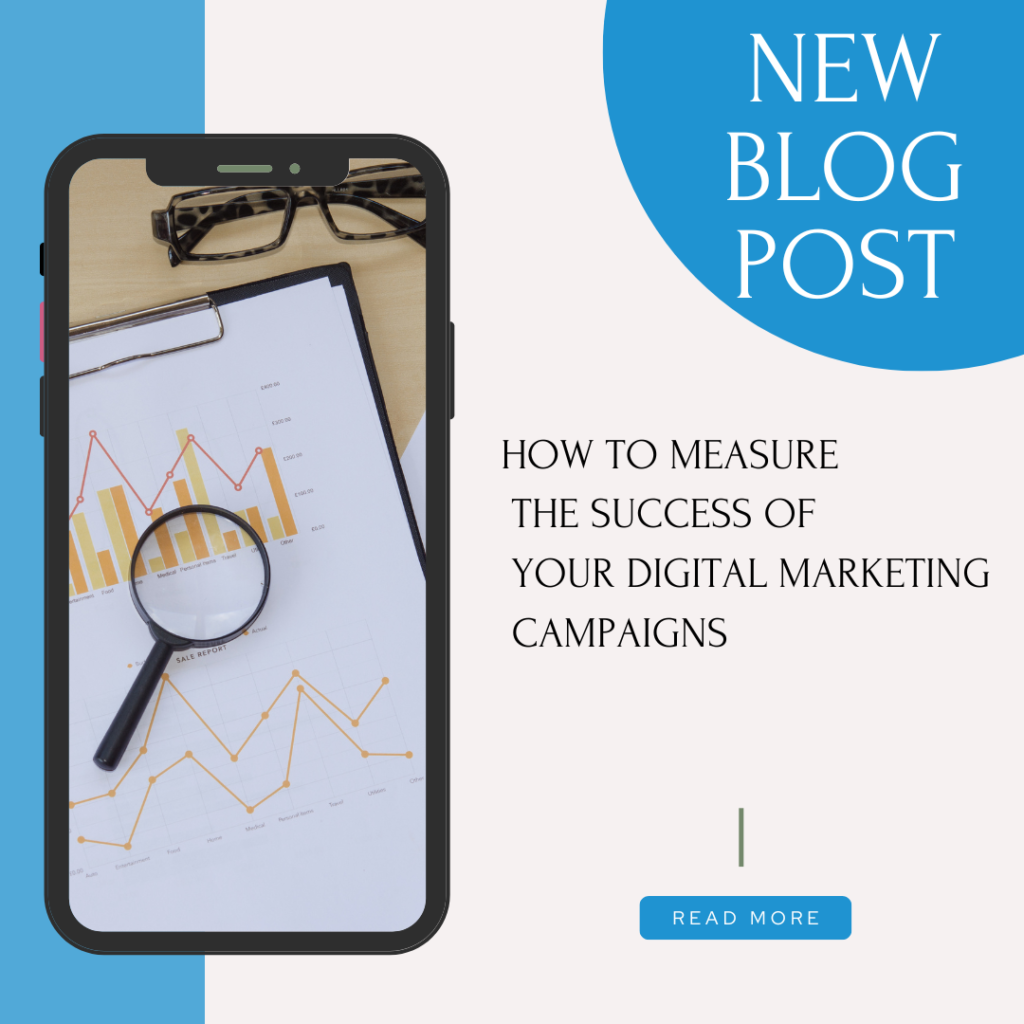
Digital marketing campaigns are essential for businesses of all sizes, but measuring their success can often be a daunting task. Without clear metrics and tracking methods, you might struggle to determine whether your efforts are paying off. Fortunately, with the right tools and strategies, measuring digital marketing success can be streamlined and insightful. Here’s how you can effectively measure the success of your campaigns.
1. Set Clear, Specific Goals
Before you start tracking metrics, it’s crucial to define the objectives of your digital marketing campaign. What do you hope to achieve? Without clear goals, measuring success becomes a guessing game. Your goals could include:
- Brand Awareness: Are you looking to increase visibility among potential customers?
- Lead Generation: Are you focused on gathering more leads to convert into customers?
- Sales Conversion: Do you want to increase sales through digital channels?
- Customer Engagement: Is your goal to build a stronger relationship with existing customers?
Once your goals are defined, you can identify the key performance indicators (KPIs) that will help measure your success. Each goal will have different KPIs to track, and they must be measurable to give you actionable insights.
2. Traffic Metrics
One of the primary indicators of digital marketing success is traffic—how many people are visiting your website or landing pages. You can track traffic through various tools like Google Analytics. Here’s how to interpret traffic data:
- Overall Website Traffic: A surge in website visitors after launching a campaign is an obvious sign of success. However, keep in mind that traffic alone doesn’t guarantee conversions or sales.
- Source of Traffic: Identifying where your traffic is coming from—whether through paid ads, organic search, social media, or email marketing—helps you understand which channels are most effective.
- New vs. Returning Visitors: The ratio of new to returning visitors will tell you whether you’re attracting fresh leads or nurturing existing relationships. New visitors suggest you are reaching a new audience, while returning visitors indicate customer loyalty.
3. Conversion Rates
The true measure of a digital marketing campaign’s success is how well it converts visitors into customers or leads. To assess conversion rates, you must set up tracking mechanisms like goal completions, form submissions, or product purchases. Use tools like Google Analytics or your platform’s built-in analytics to track:
- Lead Conversion Rate: If lead generation is your goal, monitor how many of your visitors fill out forms or engage with calls-to-action (CTAs).
- Sales Conversion Rate: For eCommerce businesses or campaigns focused on sales, the number of completed transactions is the main metric to track.
- Micro-Conversions: Even if the ultimate goal is a sale, other actions like watching a product video or signing up for a newsletter can be valuable intermediate steps, showing that you’re moving potential customers down the sales funnel.
4. Return on Investment (ROI)
Return on Investment (ROI) is one of the most important metrics for any campaign. It helps you assess whether the money spent on digital marketing is leading to a proportional increase in revenue or other desired outcomes. To calculate ROI, subtract your campaign costs from the revenue generated and divide the result by your total costs: ROI=Revenue from Campaign−Cost of CampaignCost of Campaign×100ROI = \frac{\text{Revenue from Campaign} – \text{Cost of Campaign}}{\text{Cost of Campaign}} \times 100
For example, if you spent $2,000 on a campaign and earned $10,000 in sales, your ROI would be: ROI=10,000−2,0002,000×100=400%ROI = \frac{10,000 – 2,000}{2,000} \times 100 = 400\%
A positive ROI indicates that your campaign is successful, but a negative ROI suggests the need for adjustments.
5. Engagement Metrics
Engagement metrics are crucial for understanding how your audience interacts with your content. Social media platforms like Facebook, Instagram, and LinkedIn, as well as email marketing platforms, provide a wealth of engagement data. Key engagement metrics to track include:
- Likes, Shares, and Comments: These metrics indicate how much your audience enjoys and interacts with your content. High engagement suggests your content resonates with them.
- Click-Through Rate (CTR): This measures how many people click on your links compared to how many saw your post or email. A high CTR signals that your audience finds your content compelling enough to take action.
- Social Shares and Mentions: When users share your content or mention your brand, it increases your visibility. Monitoring these can give you an idea of your brand’s reach and influence.
6. Customer Acquisition Cost (CAC)
Customer Acquisition Cost (CAC) refers to the total cost of acquiring a new customer through your digital marketing efforts. To calculate CAC, divide the total marketing costs by the number of customers acquired during that period: CAC=Total Marketing CostsNumber of Customers AcquiredCAC = \frac{\text{Total Marketing Costs}}{\text{Number of Customers Acquired}}
A lower CAC means that you’re efficiently turning prospects into customers. If your CAC is high, it may signal that you need to optimize your campaigns or targeting.
7. Customer Lifetime Value (CLV)
Customer Lifetime Value (CLV) represents the total revenue you expect from a customer throughout their relationship with your business. CLV is important for understanding the long-term impact of your campaigns. If your CLV is higher than your CAC, it means that your campaigns are profitable over time.
8. A/B Testing and Experimentation
A/B testing allows you to experiment with different versions of ads, emails, landing pages, and other digital assets to see which performs best. Regular testing helps you optimize your campaigns and improve the results by making data-driven decisions.
Conclusion
Measuring the success of your digital marketing campaigns isn’t about looking at a single metric—it’s about considering a combination of factors that align with your business objectives. By setting clear goals, tracking traffic and conversion rates, calculating ROI, and analyzing engagement, you can effectively assess the performance of your campaigns and make adjustments to ensure continued growth. Remember, the key to success lies in constant optimization and staying responsive to the data.

